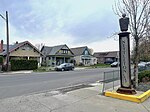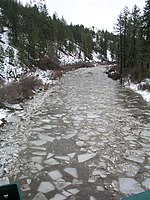Natatorium Park
Amusement parks closed in 1967Amusement parks in Washington (state)Baseball in Washington (state)Parks in Spokane County, Washington
Natatorium Park was a park in Spokane, Washington. It was originally the site of Ingersoll Park where a baseball field was built and became known as Twickenham Park, for the neighborhood that developed around it, until the natatorium was built. The swimming facility closed in 1968.It used heated saltwater from the Spokane River. A greenhouse and gardens were added. It was switched to well water. The song “Dear Old Nat” by A. D. Scammell was written about it. Amusements were added. The site is now a trailer park.KSPS aired the documentary Remember When: Nat Park in 1996.
Excerpt from the Wikipedia article Natatorium Park (License: CC BY-SA 3.0, Authors).Natatorium Park
West Summit Boulevard, Spokane
Geographical coordinates (GPS) Address Nearby Places Show on map
Geographical coordinates (GPS)
| Latitude | Longitude |
|---|---|
| N 47.672222222222 ° | E -117.45833333333 ° |
Address
West Summit Boulevard
West Summit Boulevard
99201 Spokane
Washington, United States
Open on Google Maps











